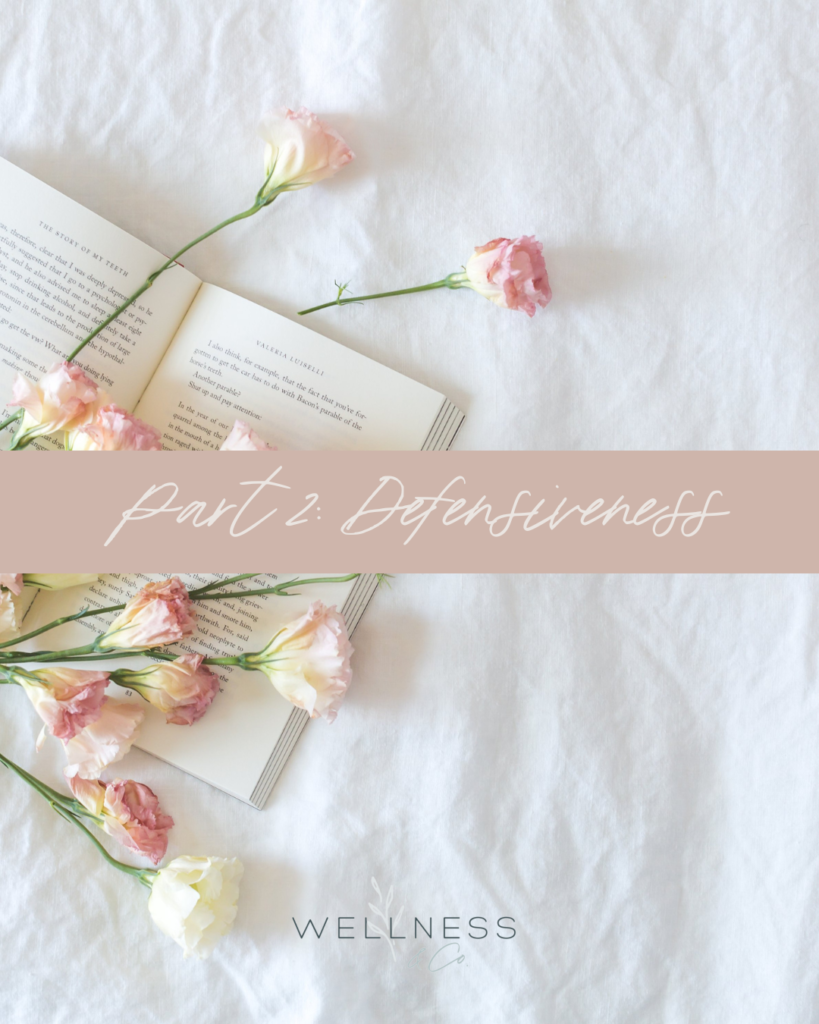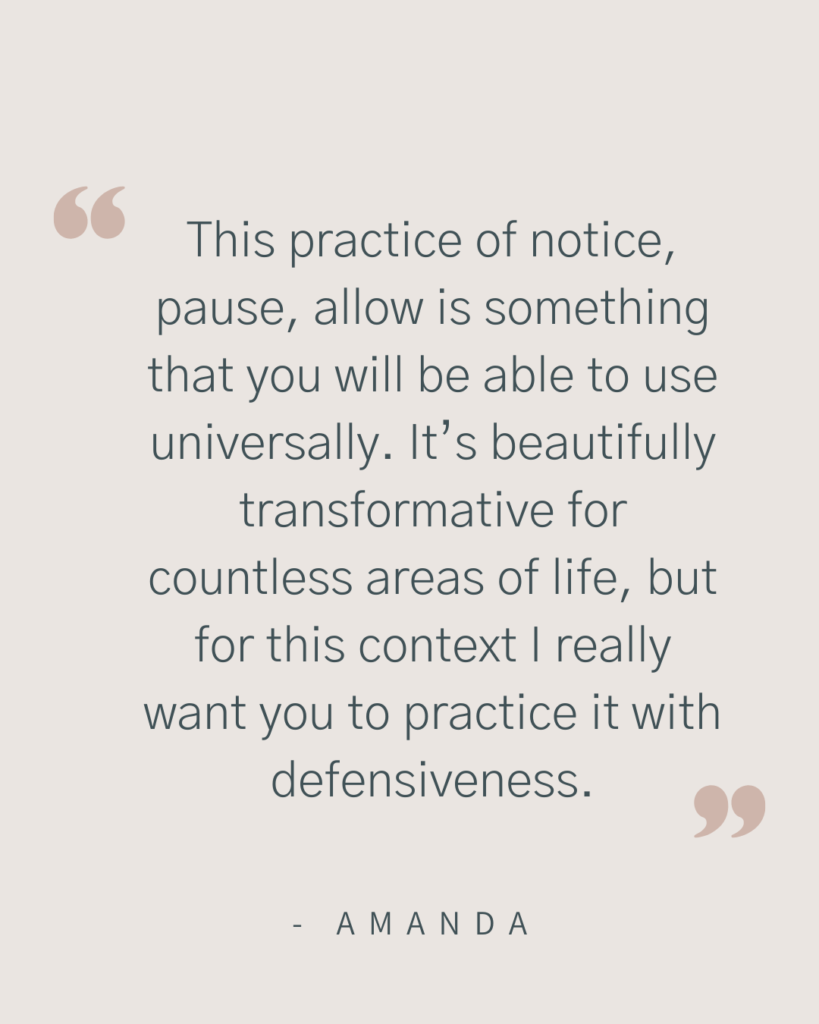Follow
Wellness & Co.
Hi, I'm Dr. K, Wellness & Co. is a growing therapy/coaching practice and educational hub for prospective clients based in Maryland and virtual clients all over the world!
Hi, I'm Dr. K
free guide
e -books
e -course
Four Toxic Communication Styles in Relationships & Their Antidotes
September 6, 2022


Part II: DEFENSIVENESS
Ok pals, we’re comin’ in hot for part two of the four toxic communication styles in relationships (and their antidotes!). Before we dive in I want to do a little check in from last week. If you haven’t read part 1 yet, scroll down and go through that first!
So, Action Step #1 invited you to engage in some joint reflection. What did you notice? What did you learn? What was your biggest takeaway? And finally – how can you carry this experience intentionally moving forward so it creates real and lasting change?
Now, pause for a deep breath (yes, seriously). Ahhhhhhhhh.
Here we go!
Horsemen #2 – DEFENSIVENESS
Antidote – Take Responsibility
When we become defensive, what we’re really doing is trying to protect ourselves. Think about it…when we feel like we’re being attacked our instinctual response is to create a shield. And while that makes a lot of sense, it doesn’t ever give us the outcome we really want – such as being seen, heard, understood, and held in compassion. Defensiveness is also a way of redirecting blame to our partner. And we’re not about playing the blame game here! No way jose. That ooooonly perpetuates the pesky cycles we’re trying to lovingly break. Gottman teaches us that there are two ways to be defensive: to counterattack or to whine (playing the innocent victim). And! Some people can do both at the same time (multi-talented or what?!).
Examples of Defensiveness:
Your partner complains that you lose track of time and are often late.
Criticism: “I am really tired of you losing track of time and being late. You’re always late!”
Defensive Counter-attack: “You’re just too uptight. I’ve got a lot on my mind. I’m never that late. Besides, you were the one who was late last night.”
Defensive Innocent Victim: “I wasn’t late on purpose. You’re always picking on me. No matter when I get there, it’s never early enough. I can’t do anything right to please you.”
Antidote: “You’re right, I’m sorry for being late tonight. I’ll try harder to be more aware of the time.”
Sounds simple right? Honestly, all of this IS simple…but NOT easy. It requires us to notice our energetic charge, the default response, breathe, get grounded in the body, and respond from a place of deep self-awareness. And the only way to get there is through practice!
There’s a wonderful quote by Victor E. Frankl that sums up what inner work is really about:
“Between stimulus and response lies a space. In that space lie our freedom and power to choose a response. In our response lies our growth and our happiness.”

Which leads us into Action Step #2!
This one is more experiential, an embodiment practice of sorts. It’s going to create more awareness of your somatic sensations (the feelings in your body) when you become defensive so you can work with it in real time.
When defensiveness arises, STOP, BREATHE, and…
- Notice – what thoughts, feelings, and sensations are present in my body right now? Where is this located in my body?
- Pause – once you’ve located the area of your body that is feeling most activated (e.g. your chest feels heavy, your stomach is in knots, your throat is tight) breathe into or around that area. Focusing on breathing in and down, fully enveloping the reactive part.
- Allow – continue with your breathing, sinking down into your seat or the ground you’re standing on (protip – it’s helpful to place your hand where the emotion is coming from), and just be present with it. No judgment, no trying to figure it out, just staying with yourself until you notice a shift. From this rooted place, what deeper insights emerge? What conscious action are you being guided into?
This practice of notice, pause, allow is something that you will be able to use universally. It’s beautifully transformative for countless areas of life, but for this context I really want you to practice it with defensiveness.
When we start to see that we are safe, we can drop our guard and connect from this space of choice, which is where we get to respond rather than react. Where we can finally connect.
As I’m sitting here writing this, I’m also thinking how sexy it is to take responsibility! Hmm. Maybe we’re into a whole new realm of foreplay here! I like it, I like it. Haha.
See you next week for part 3!
Big love,
Amanda
*Source for script: The Gottman Institute
Amanda helps teens, individuals, and couples create secure relationships within themselves and with each other. Her favorite (and most impactful!) tool to use is the Enneagram, which deepens awareness, understanding, and compassion so that we all can continue to foster meaningful connections in our day to day lives, moment by moment.
Leave a Reply Cancel reply
CONTACT
Start Here
BLOG
OUR TEAM
SHOP
ABOUT
©2025 Wellness & Co. | All Rights Reserved | Design by EverMint Design Studio
BACK TO TOP
connect with us on instagram
